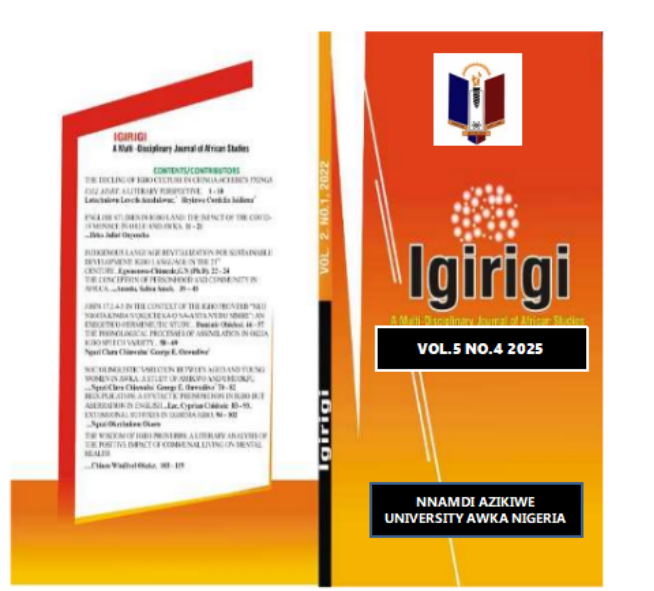A COMPARATIVE DISCOURSE ANALYSIS OF CLASSROOM COMMUNICATION PATTERNS IN SELECTED SECONDARY SCHOOLS AND TECHNICAL / VOCATIONAL CENTRES IN LAGOS STATE, NIGERIA
Keywords:
Communication patterns, pedagogical effectiveness, students’ engagements, questioning techniqueAbstract
Classroom communication patterns are crucial in all activities in the classrooms at all levels. Without appropriate classroom communication patterns, it would be impossible for the learners to comprehend the teachers’ lessons. This study investigates a comparative discourse analysis of classroom communication patterns in selected secondary schools and technical and vocational centres in Lagos State, Nigeria. The research explores how classroom discourses differ across two educational settings, focusing on teacher-student interactions, turn-taking, questioning techniques, and the use of instructional language to classroom interactions. Using a qualitative research design, data were gathered through classroom participant observations and audio recordings from teachers and students in selected secondary schools and technical/vocational schools in Lagos State. Four (4) schools, two secondary schools (one private and one public: Childbest Schools and Ikorodu Senior Secondary school), one technical schools (Ikorodu Technical College and one vocational centre (Ikorodu Skill Acquisition Centre) were selected. A total of 6104 participants, 4 teachers and 6100 students constitutes our sample. The discourse analysis framework adopted in this study is John Austin’s (1962) The Speech Art Theory. One of the major findings reveals that there are differences in communication styles, with secondary schools demonstrating overloaded patterns and teacher-centred discourse, while technical and vocational schools exhibit unstructured discourse patterns with student-centered communication patterns. The research highlights the implications of these patterns in pedagogical effectiveness, students’ engagements, and curriculum delivery. The study therefore recommends a more student-centred communicative strategies to be utilized in secondary schools so that interactive goals of these educational institutions can be achieved.Downloads
Published
2025-09-30 — Updated on 2025-09-30
Issue
Section
Articles

